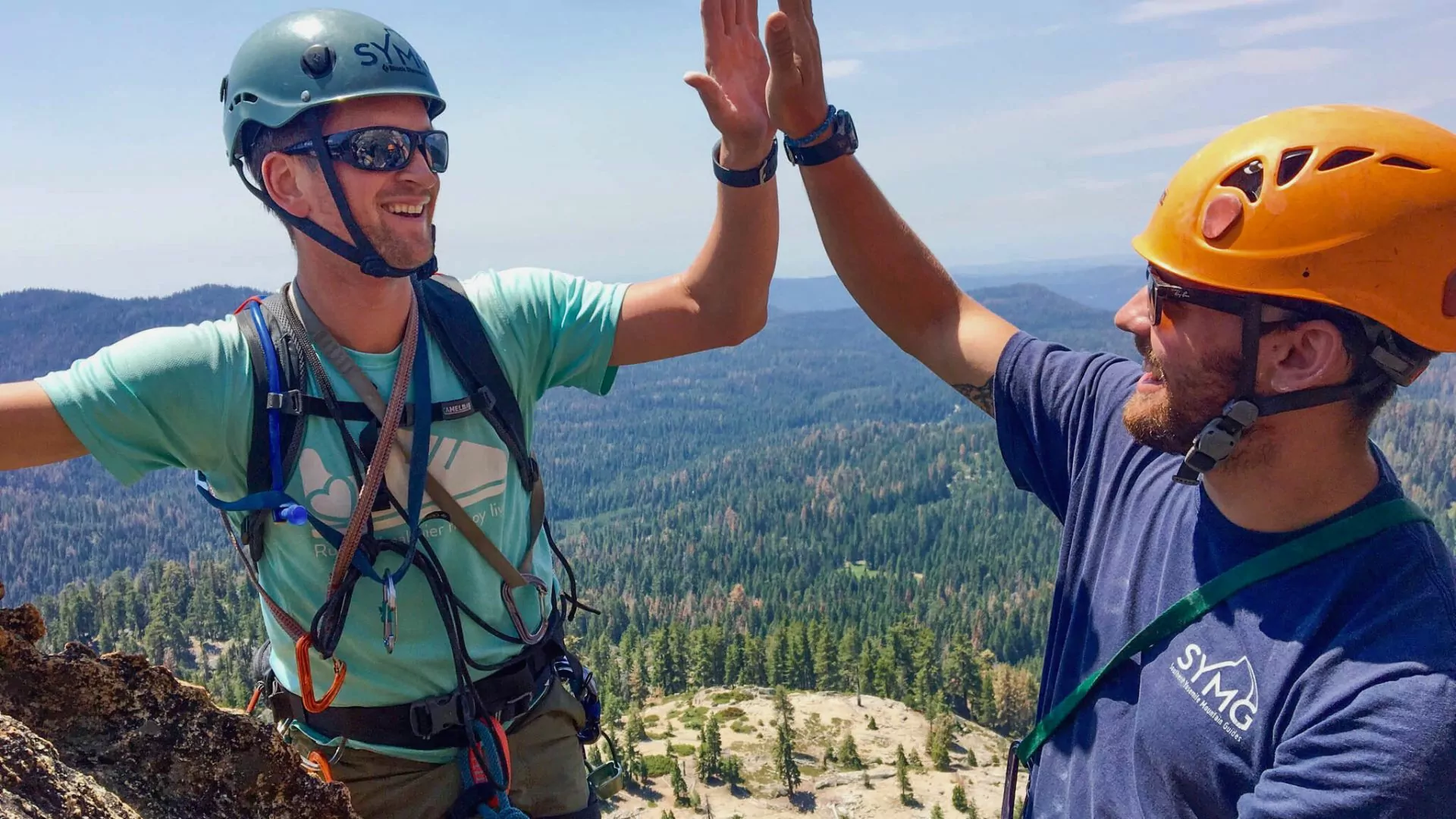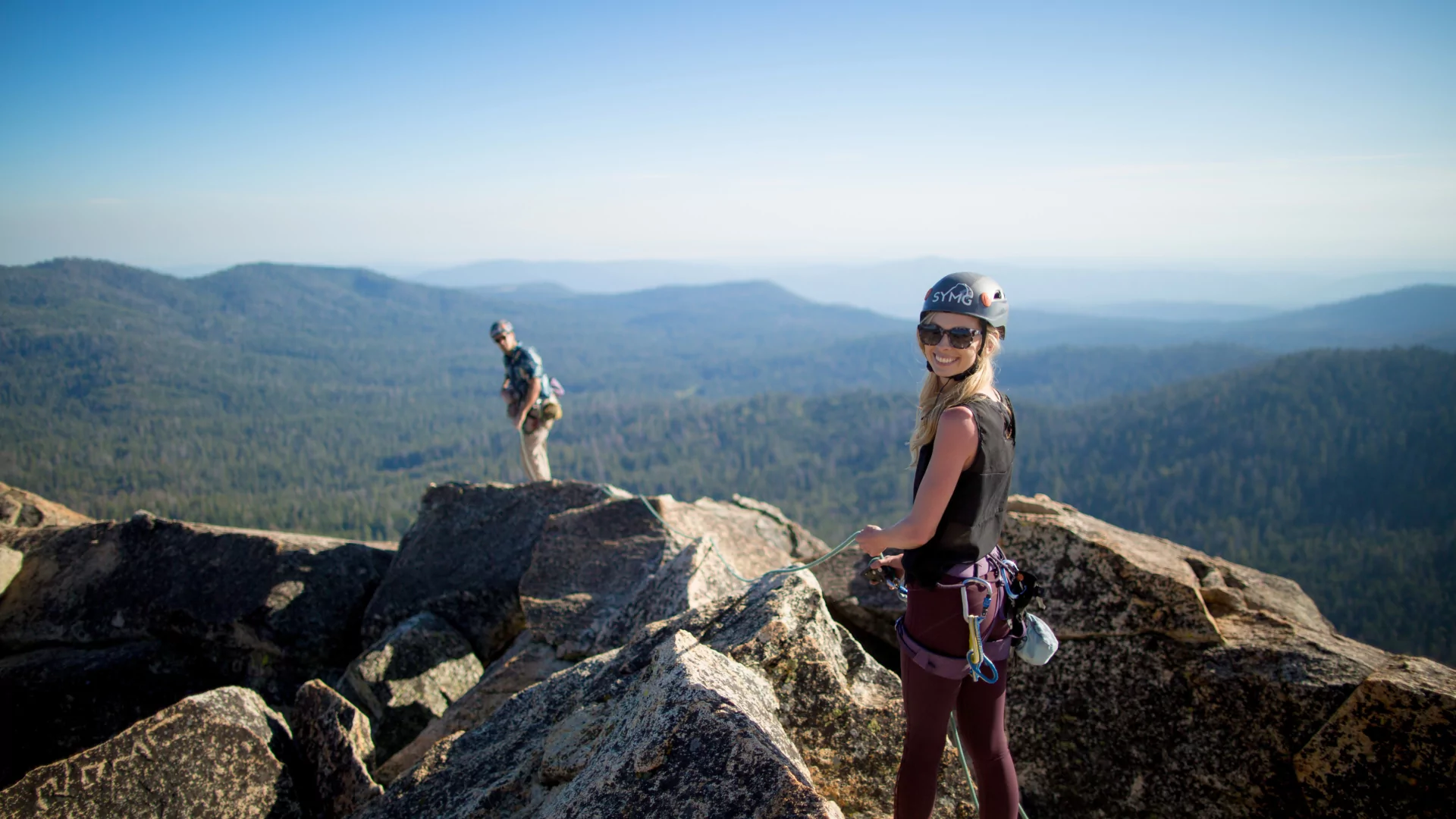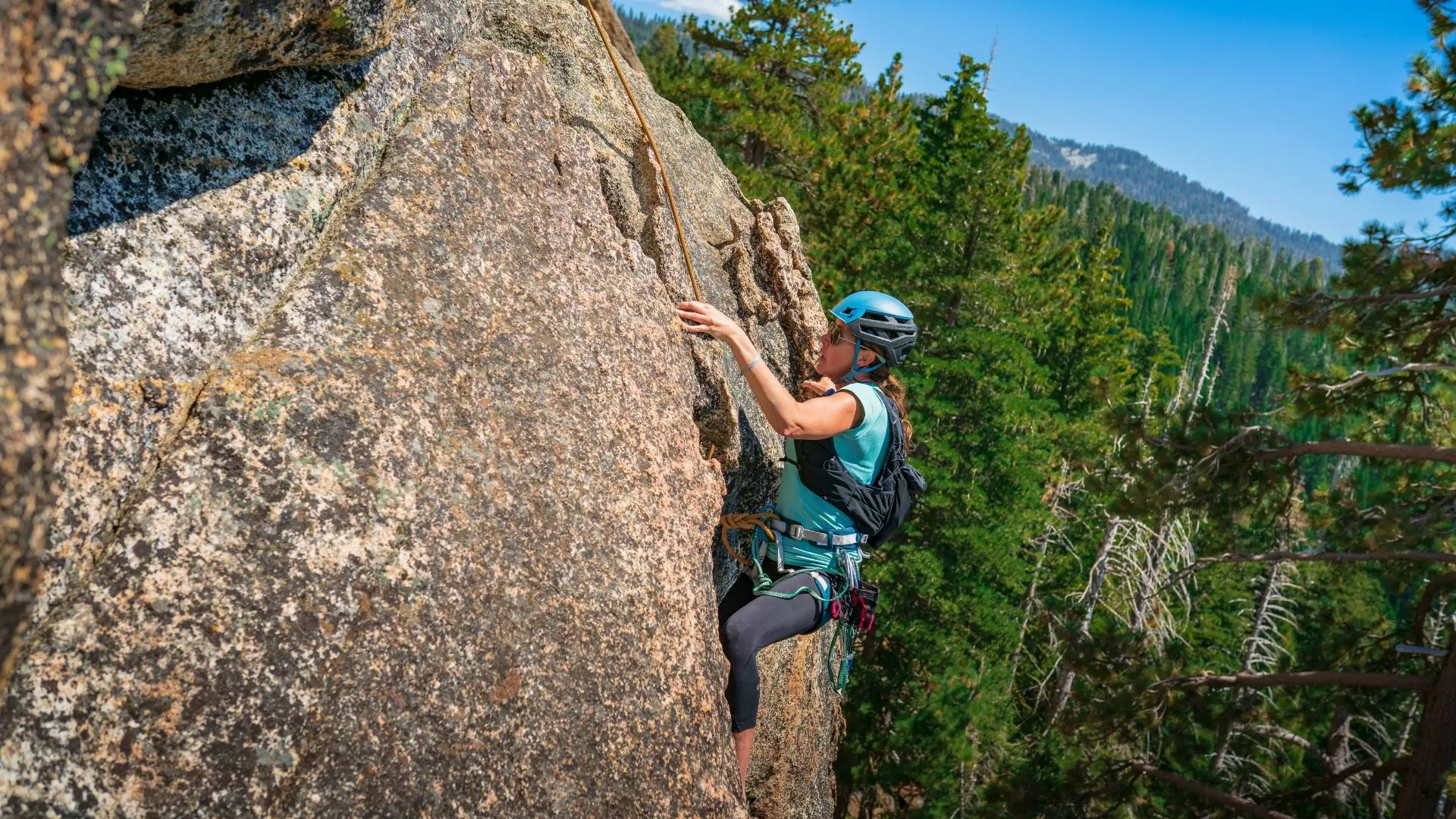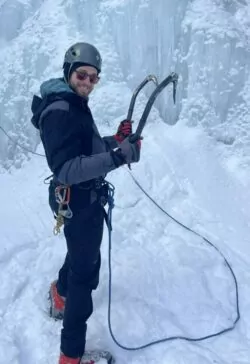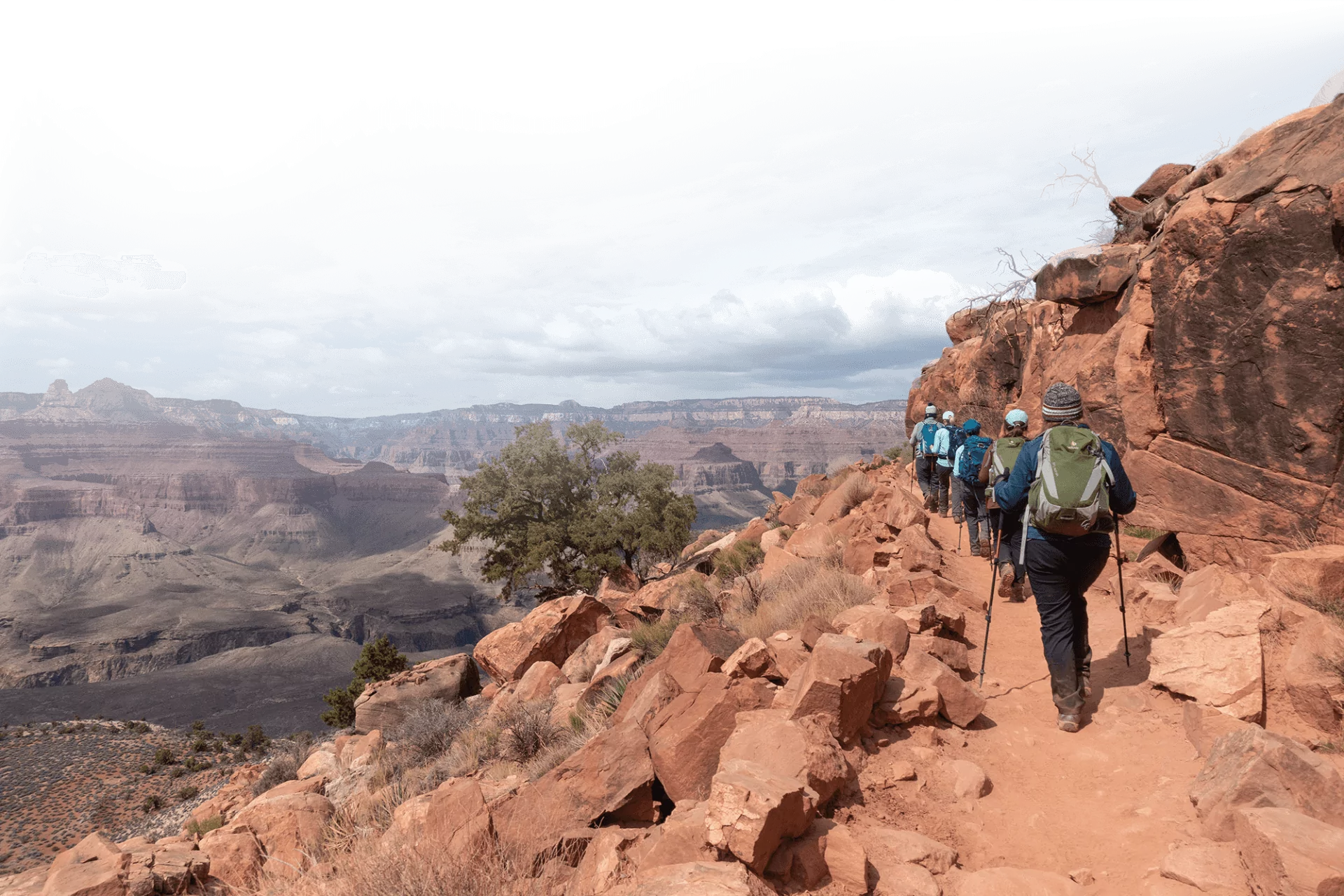A Beginner’s Guide to Outdoor Rock Climbing
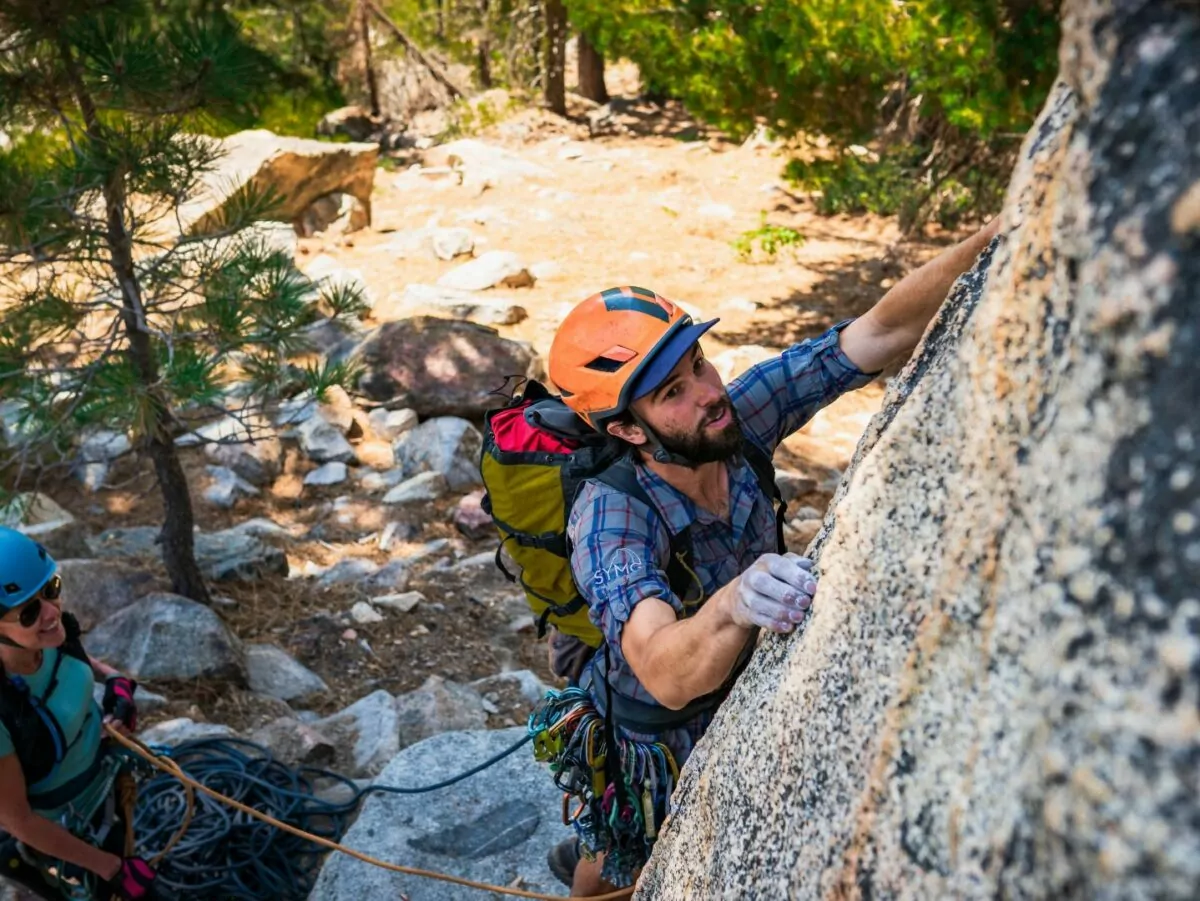
If you’ve been crushing plastic holds at the gym and are eager to take your skills outside, welcome to the next step in your climbing journey! Outdoor rock climbing is a whole different experience—more rewarding, more complex, and often more humbling. However, it is also significantly more dangerous. In a gym, many risks are minimized through controlled environments, padded floors, pre-set top ropes, and belay tests to ensure competency.
Outdoors, climbers must take full responsibility for every aspect of their being, from assessing rock quality to building secure anchors. Transitioning to outdoor rock climbing requires more than just strength; it demands knowledge, preparation, and an understanding of risk management techniques in a sometimes unpredictable environment.
How to Learn More
Learning to climb outside requires more knowledge than gym climbing. The best ways to build your outdoor rock climbing skills are:
- Hire an AMGA-Certified Guide – Certification through the American Mountain Guides Association (AMGA) ensures that guides have received rigorous training and adhere to best practices. Hiring an AMGA-certified guide is a great way to learn best practices, proper gear use, and additional climbing skills. It is highly recommended that you hire a guide to begin your outdoor rock climbing journey.
- Take a Class – Many climbing gyms and outdoor organizations offer intro to outdoor rock climbing courses. While helpful, these should be supplemented with hands-on experience under the supervision of qualified professionals.
- Join a Gym Community – Many gyms have outdoor climbing meetups or partnerships with local guides.
- Climb with Experienced Partners – If you know skilled outdoor climbers, tag along and learn from them—but make sure they’re teaching you correct techniques! Just because someone has climbed outdoors for years does not mean they are doing things properly.
- Read & Research – Read and study books published through publishers such as The Mountaineers, Falcon Guides, Chockstone, and other reliable sources.
Yosemite climbing, hiking, and camping Tour
Types of Climbing
When it comes to outdoor rock climbing, there are many different styles: sport climbing, traditional (trad) climbing, top roping, aid climbing and bouldering.
- Top Roping: This is a great way for beginners to get started with outdoor rock climbing. In top roping, the rope is anchored at the top of the climb, and a belayer manages the rope from below, providing a higher level of security than a climber has when leading. Some outdoor climbing areas have bolted anchors and nearly all outdoor rock climbing areas have natural features where traditional climbing protection can be used to set top ropes up. However, anchor building is a critical skill to learn before setting up your own top ropes, as a poorly built anchor can fail.
- Sport Climbing: In sport climbing, routes have pre-placed bolts in the rock, and climbers clip quickdraws into these bolts for protection as they ascend. It’s the most accessible style of outdoor rock climbing for gym climbers since it relies on fixed anchors similar to what you find indoors. However, outdoor falls can be much more serious than gym falls, so proper lead climbing technique and belay skills are critical.
- Trad Climbing: Trad climbing requires placing your own gear (cams, nuts, and other protection) in cracks or other features of the rock. It’s a more advanced and gear-intensive discipline that demands technical knowledge, risk assessment, and a deep understanding of rock features. Mistakes in trad climbing can have severe consequences, making it crucial to learn from experts before attempting to lead.
- Bouldering: Bouldering is climbing short but difficult routes, or “problems,” without ropes. Climbers rely on crash pads for protection and spotters to help guide falls. Outdoor bouldering requires excellent technique, strength, and problem-solving skills. Since there are no ropes involved, ground falls are frequent, making proper fall technique, spotters, and pad placement essential for injury prevention.
- Aid Climbing: Unlike free climbing, where climbers rely on their hands and feet to ascend, aid climbing involves using gear placements as points of aid to pull oneself up. This technique is commonly used on big walls, or in situations where climbers must ascend routes more difficult than they can free climb. When aid climbing, climbers ascend using ladders made of webbing, and specialized protection. Aid climbing requires extensive technical knowledge and patience, as it involves methodically placing and testing each piece of gear before progressing. While it is a niche discipline, it remains an essential skill for climbers ascending large or complex objectives.
It is recommended that most climbers who are new to outdoor rock climbing start with top roping or sport climbing before progressing to traditional climbing.
The Yosemite Decimal System
The Yosemite Decimal System (YDS) is used to grade the difficulty of outdoor rock climbing routes in the United States. Here’s a quick breakdown:
- Class 1-4: Scrambling and easy climbing, often done without a rope.
- Class 5: True rock climbing, requiring protection and belaying.
- 5.0 – 5.9: Beginner to moderate difficulty.
- 5.10 – 5.12: Intermediate to advanced routes.
- 5.13+: Expert-level climbing, requiring high strength, technique, and endurance.
After 5.10, grades also include letters (5.10a, 5.10b, etc.), with ‘a’ being easier and ‘d’ being harder. Keep in mind that outdoor rock climbing can feel much harder than indoor climbing at the same grade, keeping a humble mindset can help with the transition!
Other grading systems include:
- V-Grade (Bouldering): The V-scale (V0-V17) is used to rate the difficulty of bouldering problems. V0 is the easiest, while V17 is at the cutting edge of difficulty.
- French (Euro) System: Common in Europe, this system uses a numerical scale (e.g., 5a, 6b, 7c+), with increasing difficulty as the numbers and letters rise.
Essential Climbing Gear
Before you head to the crag, make sure you have the right equipment. Only use equipment which has been rated for climbing and is certified by the UIAA. Here’s a basic checklist:
- Climbing Shoes: Sticky rubber shoes help with outdoor rock climbing.
- Harness: Same as what you use indoors, multiple gear loops are helpful.
- Helmet: A must-have for outdoor rock climbing—rocks and gear can fall, and head injuries are one of the most common causes of serious accidents.
- Belay Device: ATC or assisted-braking device (like a GriGri) for belaying.
- Rope: Dynamic climbing ropes (usually 60-70m for sport climbing).
- Quickdraws: For attaching the rope to bolts or pieces of protection.
- Climbing Chalk & Chalk Bag: Keeps your hands dry for better grip.
- Climbing Guidebook or App: Helps you find and understand outdoor climbing routes.
For trad climbing, you’ll also need a rack of cams, nuts, slings, and additional equipment. Proper gear placement is an essential skill, and failure to place protection correctly can result in a catastrophic fall. Hiring a guide certified by the AMGA is a great way to learn these skills.
Staying Safe
Outdoor rock climbing is an incredible way to challenge yourself, explore stunning landscapes, and learn how you react in stressful situations. However, it is inherently dangerous, and even experienced climbers can make fatal mistakes. The consequences of poor technique, bad judgment, or complacency can be severe. Climbing outside means taking full responsibility for your own well being — there are no padded floors or auto belays to catch you.
So, educate yourself, practice good technical habits, and always double-check your systems. Hire an AMGA-certified guide, climb with knowledgeable partners, and never take shortcuts when it comes to risk. The mountains do not care how strong you are – remember that your project will still be there for you when you are strong enough!
Lace up your shoes, double-check your knots, and climb smart. Outdoor rock climbing is an adventure like no other.



